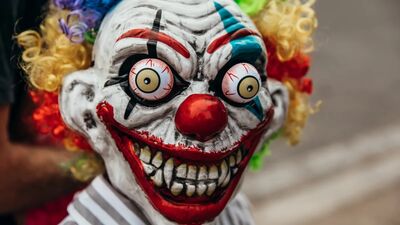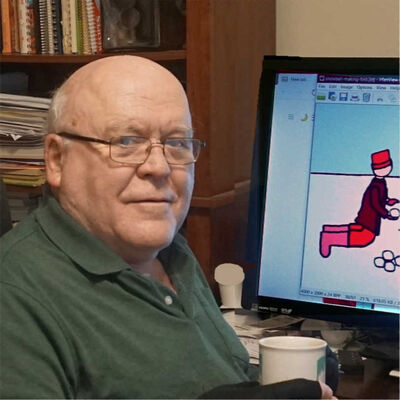Focal length, focus depth, and aperture
Nov 26, 2022 15:47:36 #
As a practical application I many times choose 200 or 300mm focal lengths to achieve a deeper focus depth when wide open.
If I have the space...200mm at f2 isolates the subject be it a model or an automobile to a greater extent than shorter lenses. The depth of focus also expands to what is typical with a 50mm lens at f4.5. The perfect creamy background is also there with the 200mm at f2. Otherwise I am usually choose f4.5 or 5.0 at anything under 70mm. The backgrounds are OK at 50 or 70mm, but the Canon 200mm f2 IS is absolutely magical.
I can take a second shot wide open with the short lenses and do some editing later, but the model needs to stay still for best results.
I wish there were a camera that could take two successive apertures exposures in combination like f1.2 with a rapid f4.5,
sounds impossible... I think I need to dream on.
If I have the space...200mm at f2 isolates the subject be it a model or an automobile to a greater extent than shorter lenses. The depth of focus also expands to what is typical with a 50mm lens at f4.5. The perfect creamy background is also there with the 200mm at f2. Otherwise I am usually choose f4.5 or 5.0 at anything under 70mm. The backgrounds are OK at 50 or 70mm, but the Canon 200mm f2 IS is absolutely magical.
I can take a second shot wide open with the short lenses and do some editing later, but the model needs to stay still for best results.
I wish there were a camera that could take two successive apertures exposures in combination like f1.2 with a rapid f4.5,
sounds impossible... I think I need to dream on.
Nov 26, 2022 16:29:12 #
Your camera may have some sort of auto-bracket or auto-HDR feature that should allow the multi-aperture settings you desire. Good luck
Nov 26, 2022 16:31:16 #
... meanwhile somewhere in Norway wrote:
As a practical application I many times choose 200... (show quote)
yes .take photo then spin aperture wheel to f4.5 in a fraction of a second and shoot in less than 1/2 second.
Nov 26, 2022 22:57:58 #
... meanwhile somewhere in Norway wrote:
I wish there were a camera that could take two successive apertures exposures in combination like f1.2 with a rapid f4.5,
sounds impossible... I think I need to dream on.
sounds impossible... I think I need to dream on.
Do we assume that you want them both 'exposed' the same (e.g. both results being equal brightness)?
Nov 27, 2022 03:09:47 #
Grahame wrote:
Do we assume that you want them both 'exposed' the same (e.g. both results being equal brightness)?
That's the point... It has to be maual and unpredictably fiddled with... If there was software capable it would be nice to get both apertures for editing. HDR is repulsive as far as I'm concerned...
Nov 27, 2022 08:34:20 #
Nov 27, 2022 09:47:20 #
... meanwhile somewhere in Norway wrote:
As a practical application I many times choose 200... (show quote)
On my A7Riv, I can come close to what you want by shooting exposure brackets while in shutter priority mode...iso is fixed. That way the camera can only change the aperture for each exposure variant.
You might be able to set that up for yourself.
I've never tried it...but I'll give it a whirl today.
Nov 27, 2022 09:48:14 #
Nov 27, 2022 11:19:26 #
On my Nikon cameras, I would set Multiple Exposure in the Photo Shooting Menu, 2 frames, take two pictures at different apertures and the camera blends the exposure for me. You end up with one image.
Or I could use Image Overlay, usually found in the Retouch Menu. Take two separate exposures, adjust each of them as needed and then combine them into one new and additional image using Image Overlay. You end up with three images.
Or I could use Image Overlay, usually found in the Retouch Menu. Take two separate exposures, adjust each of them as needed and then combine them into one new and additional image using Image Overlay. You end up with three images.
Nov 27, 2022 11:27:49 #
... meanwhile somewhere in Norway wrote:
As a practical application I many times choose 200... (show quote)
I agree with you and I feel your pain .......I think there may be a few cameras that can be programmed to do this - but I do not know which and it's not something well promoted if so. The auto HDR on my Sonys vary the shutter speed ....
.
Nov 27, 2022 12:25:58 #
Nov 27, 2022 14:36:31 #
Nicholas J DeSciose wrote:
Congratulations, and having enough money to buy a 200 mm F2 lens
I loathed for the super rare holy grail 200mm f1.8 for many years. When Canon finally came out with the 2.0 I just had to have it. No regrets and so glad to have it...
Nov 27, 2022 16:09:33 #
fetzler
Loc: North West PA
... meanwhile somewhere in Norway wrote:
As a practical application I many times choose 200... (show quote)
You should use whatever focal length that you desire for your subjects.
The depth of field for a given aperture is determined by the magnification of the subject on the sensor. You can position your camera at different distances to achieve the same image magnification but you will change your perspective. Your wide aperture telephoto lens will isolate your subject from the background (narrow focus) and enlarge the background.
Nov 28, 2022 00:14:13 #
... meanwhile somewhere in Norway wrote:
As a practical application I many times choose 200... (show quote)
First, let's get a fact regarding the physics of lenses and light correct. That is that depth of field (or as the poster here calls it, "depth of focus") increases as aperture gets smaller and/or the focal length of the lens gets shorter. Thus the 200 mm lens has a shorter depth of field than does a 50 mm lens at the same f-stop.
Now for a suggestion on changing the f-stop faster or holding the time constant, try setting your camera mode to A or T or whatever your brand of camera calls aperture and time priority. Then when you change your focal length, you can quickly adjust the aperture or timing to stay steady. --Richard
Nov 28, 2022 08:00:36 #
profbowman wrote:
First, let's get a fact regarding the physics of l... (show quote)
The "depth of focus" is perhaps the same as "depth of field" in definition sure, but a longer lens will give you greater "focus depth of the subject itself". For example the face to the back of the head, or both eyes will be in focus at wide a open f2.0 at 200mm. You then get the out of focus background of wide open. A short lens like a 50mm will need at least f4.5 to get the same "subject focus depth", but then you loose the out of focus background.
Yes manually switching between apertures is possible with time. HDR sucks, but wouldn't it be nice to take two instantaneous automatic aperture shots (short lens) with the push of the button, then take those two images and edit them. That does not exist and may never be possible.
So, depth of focus is greater, isolation increases, and depth of field
If you want to reply, then register here. Registration is free and your account is created instantly, so you can post right away.




